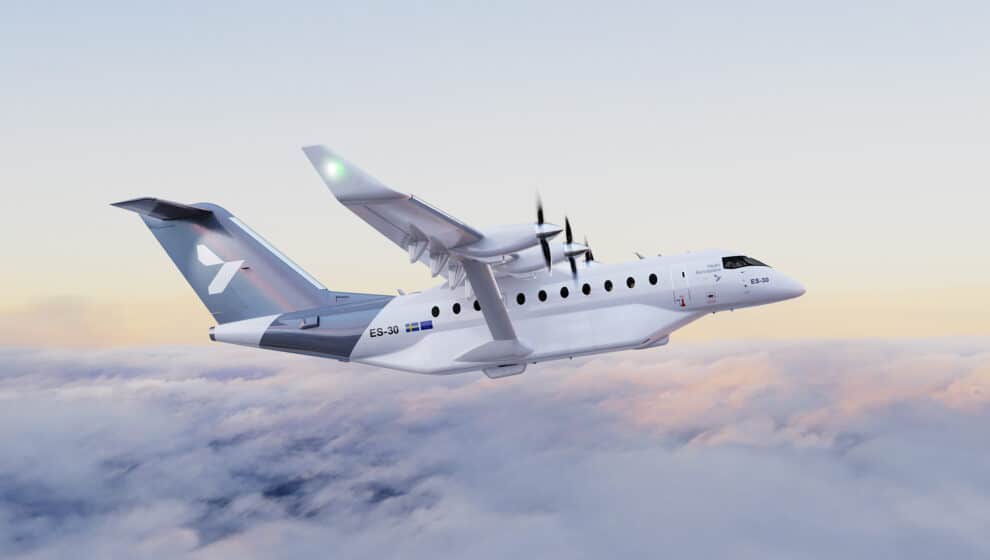A Swedish startup has made great progress in its efforts at electrifying air travel.
Key Details
- Swedish startup Heart Aerospace is taking a major step toward electric air travel.
- Heart’s newest design is the ES-30, an all-electric plane that holds 30 passengers. Heart’s mission is to create the world’s greenest, most affordable, and most accessible form of transportation.
- Heart announced that it has expanded its original 19-seat design to 30 seats and secured a factory site.
- Along with the news of its new model and factory site, Heart announced two major investors. Swedish aerospace company SAAB AB has invested in the startup and Air Canada has placed an order for 30 of the enlarged ES-30 aircraft.
Why it’s news
Many companies are working to cut back on emissions and a great way to do that is with electric air travel.
Companies have been working to make electric plans for some time and Heart is taking big steps toward that goal. The prime energy source for the ES-30 is batteries, but it does come equipped with reserve-hybrid turbogenerators and has four electric motors. The plane is designed for zero emissions at airports and on routes up to 124 miles and the electric motors aim to lower noise levels.
The Es-30 also has many low cost factors. It is has low electricity cost compared to jet fuel and the electric motors have low maintenance cost, according to Heart.
Construction of offices, test facilities, and a production line on a campus at Säve airport outside Gothenburg should be completed by mid-2024, with initial flights taking off in 2026, Heart said today.
The company is also eyeing to expand its workforce from 130 people to around 500 over the next three years.
Heart founder and CEO Anders Forslund says the new shareholders will bolster the push for all-electric flight, with Saab “synonymous with aerospace” and Air Canada “a strategically important partner with one of the world’s largest networks operated by regional turboprops.” according to Bloomberg.
Limitations
All electric air travel comes with limitations, due to batteries only being able to take the planes so far without being recharged.
The ES-30 will be able to fly only 200 kilometers (124 miles) with a full load, extending to 400 kilometers (248 miles) in hybrid mode, aided by aviation fuel, and 800 kilometers (496 miles) if capacity is capped at 25 passengers, according to Heart.
These limitations make the aircrafts suitable for shorter routes, most of which are hindered by features such as mountain ranges and sea passages.
Backing up a bit
Heart isn’t the only company working on a greener aircraft.
Earlier in the year, Hawaiian Airlines invested in a Boston-based company that seeks to bring all-electric airplanes into commercial service, providing fast, efficient, and low-cost travel for regular, short-duration routes.
The goal of the company, Regent Craft, is to reduce the cost and hassle of regional transportation between coastal cities. It designed a 100-person, all-electric seaglider called the Monarch that will be zero-emission and half the cost to operate as a traditional aircraft.
The aircraft is slated to launch into the commercial space by 2028.

